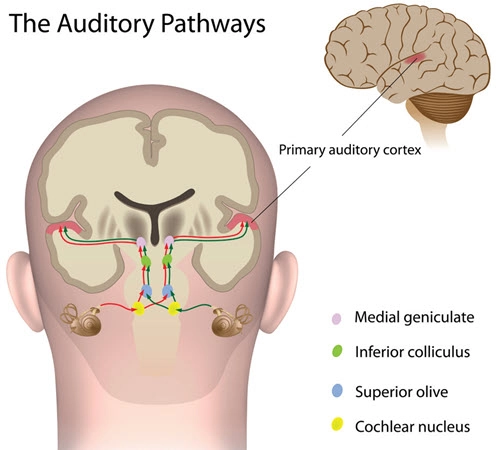Otolaryngology Coding Alert
Highlight Benefits of New Auditory Evoked Potential Codes
See how added detail in the description can ease the coding burden.
Auditory evoked potential (AEP) testing is a staple in any otolaryngology practice that has an audiology branch. For years, the coding for these services has remained constant, but there was always room for improvement in terms of describing the provider’s services.
That’s why audiology coders were especially excited to see that the 2021 CPT® manual completely overhauled the AEP code set. With the help of CPT® Assistant (Volume 30; Issue 10), you’re going to break down the fundamentals of each of these four new codes to answer some of the most pressing questions surrounding their use.
Read on for some important insights into the new AEP code set.

Swap Out 92585, 92586 with 4 New Codes
CPT® Assistant offers up some useful guidance to smooth your transition to the following four new AEP codes:
- 92650 (Auditory evoked potentials; screening of auditory potential with broadband stimuli, automated analysis)
- 92651 (… for hearing status determination, broadband stimuli, with interpretation and report)
- 92652 (… for threshold estimation at multiple frequencies, with interpretation and report)
- 92653 (… neurodiagnostic, with interpretation and report)
The above four codes will be taking the place of the following deleted codes:
- 92585 (Auditory evoked potentials for evoked response audiometry and/or testing of the central nervous system; comprehensive)
- 92586 (… limited)

Outlines the Differences, Similarities Between Each New Code
As you can see, the first underlying difference between the code sets is the removal of the terms “comprehensive” and “limited.” Without any further elaboration in the CPT® code book, otolaryngology coders were left to their own devices to interpret the difference between the respective levels of service.
CPT® Assistant offer some valuable insights into what otolaryngology coders should look out for in the clinical report to distinguish between these four new codes. For instance, code 92650 will involve an initiation of the AEP screening protocol. This will include an evaluation of “evoked responses to broadband stimuli by the screening device based on an automated algorithm.” Furthermore, this service will be performed on newborn patients identified for universal newborn hearing screenings.
To consider: “An audiologist or otolaryngologist does not have to administer and interpret the findings from this automated test,” says Barbara J. Cobuzzi, MBA, CPC, COC, CPC-P, CPC-I, CENTC, CPCO, of CRN Healthcare in Tinton Falls, New Jersey. “Besides newborn screening, it would not be surprising to find this type of equipment in a pediatrician’s office,” Cobuzzi adds.
Code 92651, on the other hand, is utilized as a follow-up test to 92650 for newborns that failed one or more portions of the newborn hearing screening. This exam should include documentation of auditory brainstem response (ABR) testing in response to moderate-to high-level broadband stimuli on one or both ears.
Identifying differences between 92561 and 92562 is a little tricker. Both newborns will typically arrive for follow-up testing following results of a screening or evoked potential identification audiometry. The underlying difference is what the audiologist is seeking to achieve from the study. With respect to code 92561, the audiologist is trying to determine whether the hearing loss is due to transient conductive loss (postpartum), sensory loss, or a neural abnormality. CPT® Assistant explains that code 92652 will be performed to identify the “type, severity, and audiometric configuration of the hearing loss.”
Code 92562 will involve the audiologist presenting broadband or frequency stimulus to one or both ears, in which the audiologist will then record the ABR or auditory steady-state response (ASSR). The stimulus level is adjusted and further stimuli, such as tone bursts, are added. Keep in mind that both codes 92651 and 92652 involve an interpretation and report at the end of the study.
Discern 92653 From the Rest
Finally, you should understand how the context surrounding a neurodiagnostic AEP differs from codes 92650-92652. Code 92653 may be performed on a patient of any age, typically with unilateral symptoms, in order to rule out an underlying disorder of the eighth cranial nerve or auditory brainstem. This study involves high level click stimuli to the affected ear and a recording of the ABR. The stimulus is then adjusted until the provider documents an ABR with all wave components (I, III, and V) present. The provider follows up with an interpretation and report of the study.
Otolaryngology Coding Alert
- CPT® Coding:
Highlight Benefits of New Auditory Evoked Potential Codes
See how added detail in the description can ease the coding burden. Auditory evoked potential [...] - COVID-19:
Work Out 3 Common COVID-19 Diagnostic Case Studies
Not sure which ICD-10 code to list first? Consider these strategies. Sequencing COVID-19 among other [...] - E/M 2021:
Break Down MDM Coding for Office/Outpatient E/M in 2021
Consider provider’s analysis and management among other variables. Your coding options for office/outpatient evaluation and [...] - You Be the Coder:
Choose Appropriate Fourth, Fifth Characters for Azithromycin Allergic Reactions
Question: What’s the diagnosis coding for a patient experiencing an allergic reaction (vomiting, rashes) to [...] - Reader Questions:
Stick Within the Confines of 31267 Code Description
Question: Can I report code 31267 when the surgeon only removes tissue from the ostium [...] - Reader Questions:
Take These Steps for Claims Deemed Unprocessable
Question: We received an “unprocessable” claim from our Medicare Administrative Contractor (MAC). Can we appeal [...] - Reader Questions:
Take These Steps for In-Office COVID-19 Swabs, Handling
Question: If a provider has a telehealth visit with a patient and the patient is then [...] - Reader Questions:
Gain Additional Insights Into Modifier 22 Reporting
Question: In what instances should I consider appending modifier 22 to surgical claims? California Subscriber Answer: A [...]

